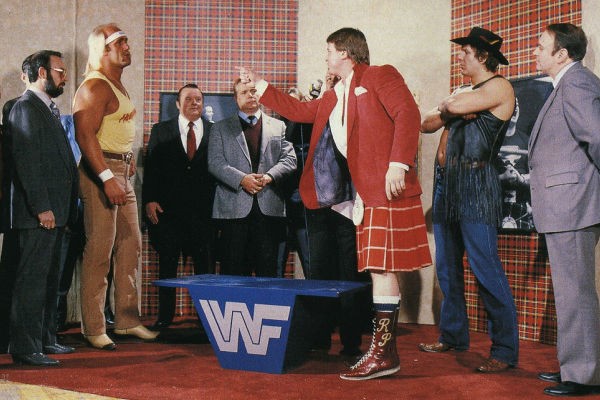How WrestleMania Almost Killed WWE

Hulk Hogan had become a breakout star thanks to his role in Rocky III as Thunderlips, a larger-than-life wrestling heel who battled Sylvester Stallone’s Rocky Balboa. At the time, Hogan was working for Verne Gagne’s AWA, but Vince saw him as the perfect centre piece for his vision of WWF. He lured Hogan away in late 1983, and by early 1984, Hogan was crowned WWF Champion after defeating The Iron Sheik at Madison Square Garden. The Iron Sheik’s title reign was short-lived, orchestrated specifically to set up Hogan’s triumph as Backlund's reign - and with it the image of a company McMahon no longer needed hanging around - hurriedly disappeared from view. With Hogan as champion, Jr had his own golden goose.
The strategy was clear: build the company around Hulk Hogan’s larger-than-life charisma and position him as a superhero for a national audience. The timing was perfect. The 1980s were an era of excess, where flamboyant personalities and patriotic themes resonated with mainstream America. Hogan fit that mold perfectly with his chiseled physique, boundless energy, and his iconic rallying cry of “Train, say your prayers, take your vitamins.” But McMahon knew that a single star wasn’t enough. He needed a roster filled with characters that felt ripped from the same silver screen TAFKA Thunderlips had emerged from. He assembled a cast of villains and heroes that were tailor-made for television. Rowdy Roddy Piper, an incendiary trash-talker that had drawn money and acclaim everywhere he'd been, became Hogan’s perfect foil. “Mr. Wonderful” Paul Orndorff, a jacked heel as egotistical as his name suggested, was another major acquisition. And then there were legends like André the Giant, who brought credibility and spectacle wherever he appeared and was packaged as somebody as homegrown as Vince Jr himself.
With his roster in place, Vince pushed forward with a bold expansion plan. Ignoring calls to stay in his lane, he struck more deals to air WWE programming in markets controlled by rival promotions, effectively invading enemy territory. He aggressively sought out pay-per-view and closed-circuit television opportunities, recognising that the future of wrestling profitability lay in large-scale supercards such as the yet-to-be-christened 'Grandest Stage'.
The territory promoters fought back. Verne Gagne tried to lure Hogan back to the AWA, even offering him a percentage of the company, but Hogan stayed loyal to Vince. Jim Crockett Jr., who controlled the powerful Mid-Atlantic territory, pushed back by trying to dominate the emerging pay-per-view market before McMahon got there. Other promoters, including Bill Watts (Mid-South Wrestling) and Fritz Von Erich (World Class Championship Wrestling), saw their talent being poached and their business eroding under Vince’s aggressive tactics but remained steadfast that their talent and creativity could outlast his bombastic and marketing-heavy promotion. Not for the first time in the story, they'd end up on the wrong side of this slice of wrestling history.
Despite these successes, WWE was haemorrhaging money by early 1985. The costs of the national expansion strategy mounted up and convincing the public that wrestling could stand shoulder-to-shoulder with the biggest sports and entertainment properties in America wasn't getting any cheaper. WWF was spending more than it was bringing in, and Vince and Linda McMahon had leveraged everything - including personal finances - on the belief that wrestling could go mainstream on a national and global level. It was time to pull the trigger on something that would make all the financial risks pay off in one night - a true game-changer. That game-changer was WrestleMania.
(CONT'D)